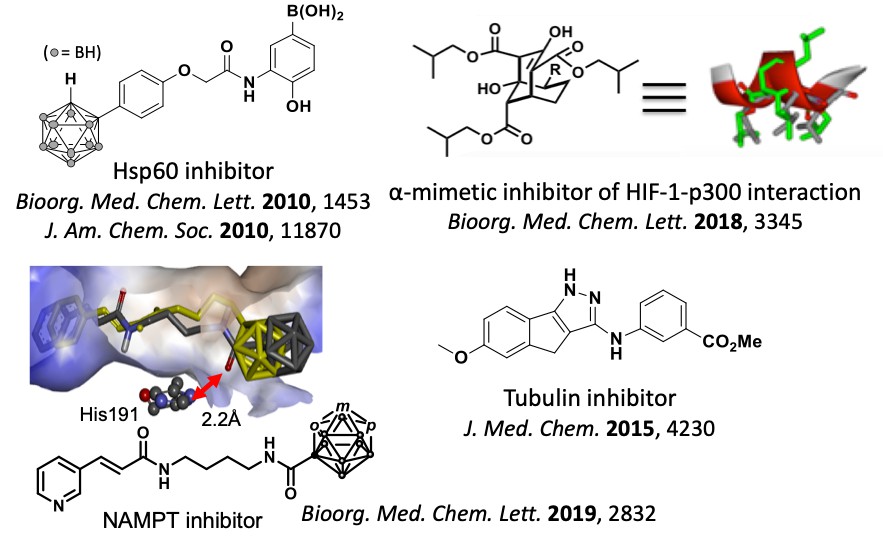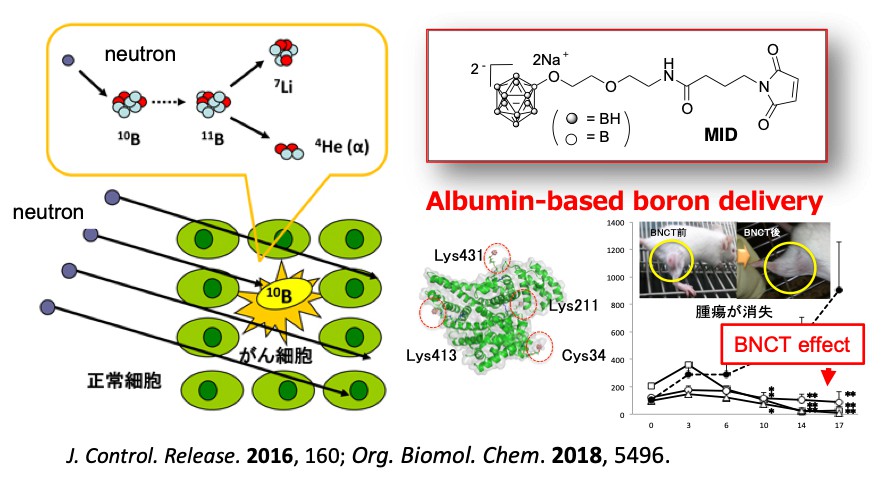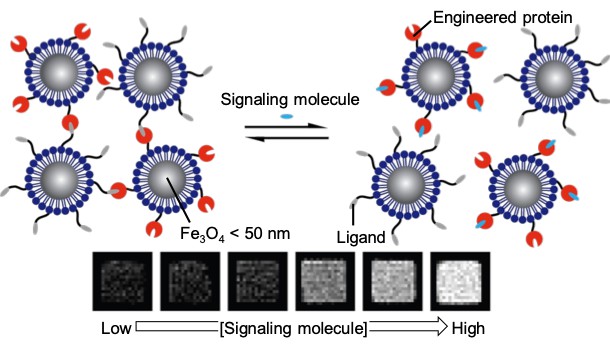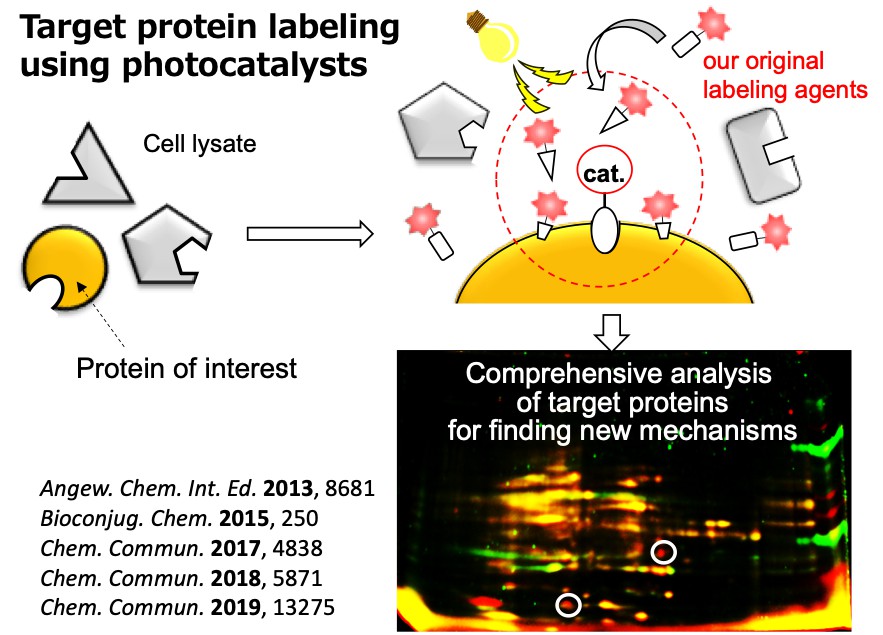Exploring and Controlling Vital Function Using Designed Synthetic Molecules for Innovative Drug Discovery
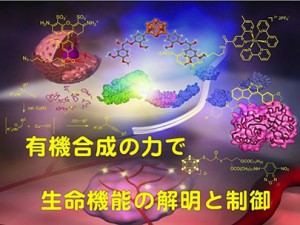 Our research interests are focused on discovery of drug candidates for anticancer agents, development of new methodologies for target protein-selective modification in chemical biology, and development of efficient boron delivery system in neutron capture therapy of cancer. Our research is directed to interdisciplinary area based on organic synthetic technology to explore and control vital function for innovative drug discovery.
Our research interests are focused on discovery of drug candidates for anticancer agents, development of new methodologies for target protein-selective modification in chemical biology, and development of efficient boron delivery system in neutron capture therapy of cancer. Our research is directed to interdisciplinary area based on organic synthetic technology to explore and control vital function for innovative drug discovery.
Synthesis of Novel Basic Skeletons of Bioactive Compounds
Development of core skeletons of bioactive compounds is important research in drug discovery. We design and synthesize novel skeletons based on boron and three dimensional small molecules targeting protein-protein interaction. The biological activities of the synthesized molecules are estimated by ourselves and fed back to the molecular design.
Fig. 1 The synthesized bioactive compounds.
Development of Next-Generation Boron Nanocarriers for Boron Neutron Capture Therapy (BNCT)
Fig. 2 Schematic image of BNCT for cancer therapy.
BNCT is a less invasive cancer therapy based on a reaction of thermal neutrons with boron-10 of agents. In order to increase the efficacy of therapeutic effect, we develop a next-generation nanocarrier for the efficient delivery of boron compounds to cancer tissues.
Development of Magnetic Probes for Imaging and Controlling of Biological Functions
Fig. 3 MRI nanoprobes for imaging of signaling molecules.
The imaging modalities using magnetic field is a powerful tool to observe a wide region of the body, although their molecular specificity is inferior to optical modalities. To address this issue, we develop magnetic probes that convert a specific signaling molecule to MRI contrast.
Development of Protein Labeling Systems Using a Photocatalyst
Fig. 4 Selective protein labeling using a photoredox catalyst.
Protein labeling is a useful technology to identify the target protein of an inhibitor and the mode of action. We utilize a photoredox catalyst to label the proteins that are unlikely to be identified by the current technology.


 日本語
日本語